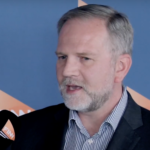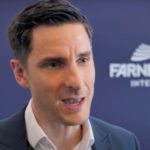Partnerships between different sections of the aviation industry are vital if sustainability goals are to be met in the future, Nick Earl, CEO of Safran Helicopter Engines UK, said.
He explained how the company was “working proactively” to encourage the use of sustainable aviation fuel (SAF) as well as working on more fuel efficient engines and airframe designs.
Collaborations
But he said collaborating with partner organisations was key.
Earl commented: “It is really important for all elements of the industry to work together, because no one single area can do it alone.
“If we leave individual parts of the industry to work alone it might not necessarily create the optimum solution for all of us, so we are investing with those fuel companies in their development of future fuels so that they not only meet the requirements for our engines to deliver the highest performance but also maximise the potential to reduce emissions.”
Engine design
Describing the work Safran Helicopter Engines UK was doing to improve its sustainability profile, he added: “Engines that we are working on at the moment are likely to produce 20 per cent less fuel consumption than previous iterations of the engines, which translates directly to 20 per cent less emissions.”
He said the company was also “working closely with our airframe partners to ensure that the helicopter as a whole is as efficient as possible, and therefore the fuel consumption is as low as possible”.
And by using and promoting SAF, he said Safran could “start making a difference as soon as possible”.
eVTOLs
Turning to the role of helicopters into the future, he said: “There is a role for helicopters due to the unique nature of what they can do in terms of their power to weight ratio that they can deliver, the payload, the range that they can deliver over a very specific scope of activities.
“eVTOL (electric vertical take-off and landing aircraft) is absolutely going to have its place in the future, but we believe helicopters, particularly the larger ones, are going to be around for a long time yet.”

